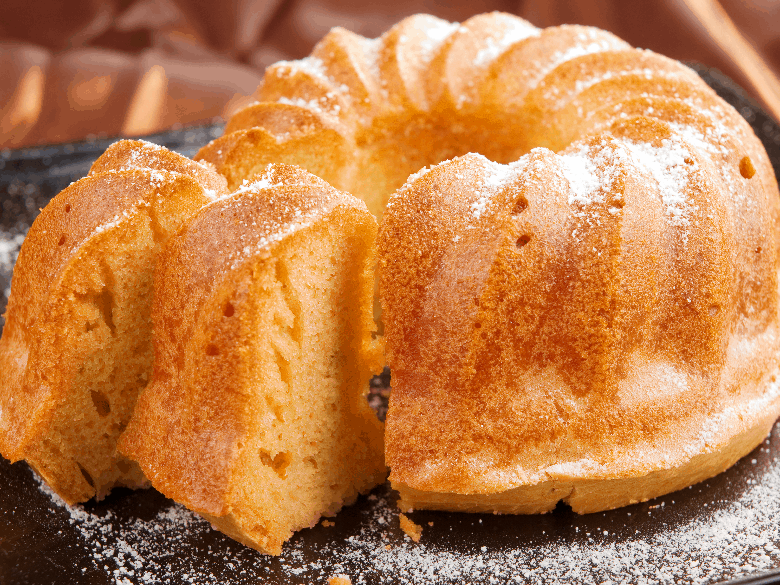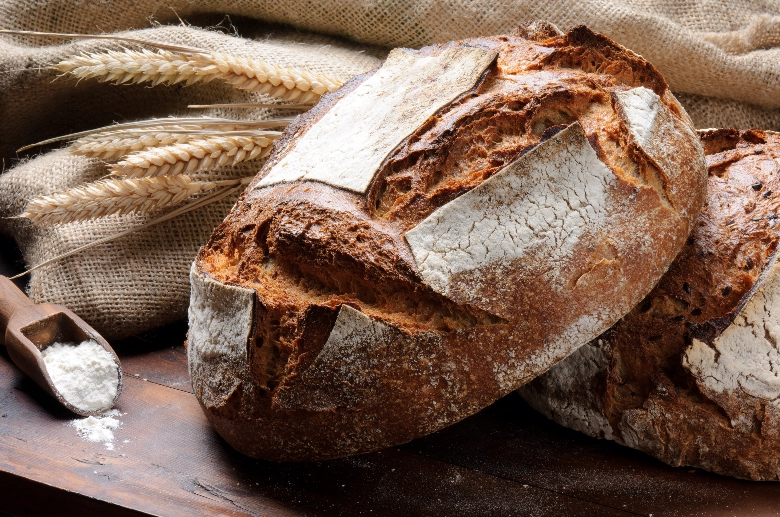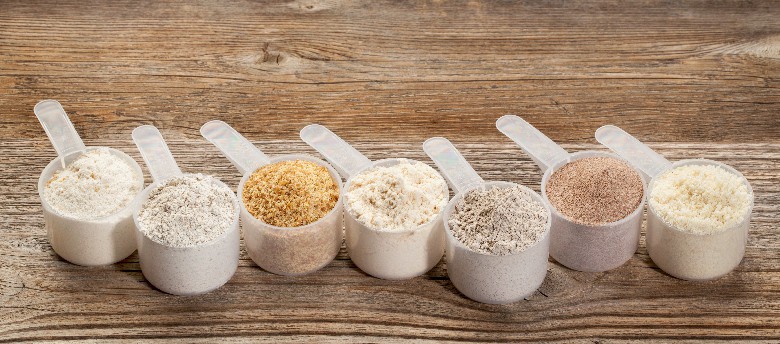These days, the options for flour are endless. Bread flour, wheat flour, and every gluten-free option you can dream of are available on the market. While that’s all fine and dandy, nothing can compare to the versatility of all purpose flour.
You’ve no doubt heard the hype surrounding all purpose flour. Odds are you have a bag sitting in your pantry right now. And although you’ve used it, you’ve probably often wondered “Is all purpose flour really good for everything?”
In short, yes. All purpose flour can be used for just about anything. However, that doesn’t mean you should.
I’ve been experimenting with different kinds of flour since my grandmother taught me how to hand-crank homemade pasta as a kid. While I’ve always kept a bag of all-purpose on hand, I’ve found other flours can do wonders to elevate your baking.
Read on to find out more about all purpose flour and the best alternative options.
Related: Check out our other guides for more useful tips.
What Is All Purpose Flour?
All purpose flour is one of the most popular flours in the United States. But what do you really know about it? Here’s the rundown on all purpose flour
Origin
Flour has a long history tied into the technological advancements of civilization. Along that timeline, the mass production of all purpose flour is relatively recent.
In the United States, the era of industrialization saw rise to large mills that could output huge quantities of flour to serve the masses. However, producing an abundance of flour wasn’t the only problem.
Ground flour had a short shelf life. During the 19th century, the process of degerming flour became the norm as a means of increasing shelf life. This gave rise to the all purpose flour we know and use today.
Composition and Nutrition
All purpose flour consists of starch and protein. Most all purpose flour has a protein level of around 10 to 13 percent which is considered moderate. The exact amount of protein will vary according to the manufacturer and the wheat varieties used.
Typically, manufacturers use an 80:20 ratio of milled hard and soft wheat flour. They may also use hard red winter wheat flour.
It’s also not uncommon for all purpose flour to be fortified with other vitamins and minerals. This is because the most nutritious part, the bran, is removed during the milling process. What’s left is the endosperm which is high in carbs.

Commercial Production
The production of all purpose flour begins by milling wheat berries. During this process, the bran (outer coating) and germ (embryo) are removed to leave the starchy endosperm. The flour then may be bleached or enriched with nutrients such as folic acid and iron.
Bleaching
After milling, the carotenoids in flour result in a yellowish color. This eventually fades with time. However, most people are put off by the color.
To solve the problem, commercial producers use an agent called benzoyl peroxide. This bleaching process quickly whitens and ages the flour making it ready for sale.
Uses
All purpose flour has been my go-to for years. Cakes, breads, pastas, pizza doughs, cookies, and all the baked goods you can think of can be made with all purpose flour. It can also be used as a thickening agent in sauces and a breading component for fried foods.
Unless a recipe specifically calls for something else, when you see the ingredient “flour” they’re talking all-purpose.
Other Types of Flour
As versatile as all purpose flour is, alternative options may be better suited for the job. Here’s a list of common flours and their use.
Cake Flour
If you’re not using cake flour, it’s time to start. I used to think this was a marketing scheme to get me to buy just another specialized flour. That is until I used it.

Cake flour is the trick to getting your cakes or other baked goods light and fluffy. This is due to the lower protein content. In fact, cake flour has one of the lowest flour protein contents at around 5 to 8 percent.
Compared to all purpose flour, the consistency is very fine. It also soaks up liquid to help prevent your cakes from drying out.
Try it next time you make angel food cake. You can even use it to make flaky, buttery biscuits.
Bread Flour
If there is one flour I swear by, it’s bread flour. I’ve baked countless loaves of bread that turned out disappointingly dense. The moment I switched to bread flour, everything changed.
Bread flour results in the perfect crumb with a soft interior and beautifully browned crust. It also helps the bread achieve the ideal rise so you don’t wind up with a dense, hard loaf.

Unlike cake flour, bread flour has a very high protein content. Around 12 to 14 percent to be exact. This means there’s more gluten to help trap carbon dioxide as the yeast begins to ferment. The result is a better rise as I mentioned before.
Self-Rising Flour
Self-rising flour is a low-protein wheat flour. It gets its name from the baking soda and salt that are added in as rising agents. Due to the additional ingredients, it has a shorter shelf life of about six months. After that, the rising effect dwindles.
Compared to all purpose flour, self-rising flour is more limited in use. It should only be used as a replacement when a recipe calls for the leavening effect.
For instance, I wouldn’t use it to make beer-battered fish or a loaf of whole wheat bread. Rather, self-rising flour is better for making fluffy pancakes, muffins, or pizza dough.
If you have all purpose flour, you can make your own self-rising flour by adding in a quarter teaspoon of salt and a teaspoon of baking soda for every cup of flour.
Whole Wheat Flour
The difference between all purpose flour and whole wheat flour is the bran and germ of the wheat berries are added back in.
Despite a high protein content, whole wheat flour doesn’t have high gluten. This is because gluten is hindered by the presence of the bran and germ. This results in denser baked goods with higher nutrition. Additionally, you’ll want to use whole wheat flour within three months due to the shorter shelf life.
For most recipes, you can substitute half the amount of all purpose flour for wheat flour. One of my favorite recipes is a pizza dough that calls for a 1:1 ratio. You can also use whole wheat flour to make bread, pancakes, muffins, crackers, or even pasta.
Gluten-free
There are all sorts of ingredients that can be used to make gluten-free flour. Coconuts, almonds, and chickpeas to name a few. What makes flour gluten-free is it lacks the specific composite proteins that makeup gluten in wheat.
How you use gluten-free flour really depends on the ingredients the flour is made from. One of the more popular brands sold on the market is Bob’s Redmill Gluten-Free All-Purpose Baking Flour.

This gluten-free flour is a combo of potato starch, garbanzo bean flour, fava bean flour, tapioca flour, and whole-grain white sorghum flour. The combo is great for a range of uses including pasta and pizza dough. I use it to make savory gluten-free pancakes topped with a poached egg and fresh pico de gallo.
Brown rice flour is another very common gluten-free option that’s often found in crackers, muffins, and cookies. Black bean flour can be surprisingly good in chocolatey brownies. Meanwhile, teff flour is the main ingredient in injera, an Ethiopian flatbread.
Almond flour is another fantastic option. This can be used as a substitute for wheat flour and adds a delicious nutty flavor. Buckwheat is an additional option that tastes great in pancakes and has zero gluten content despite the deceiving name.
The key is to find a flour that compliments the flavors of your dish. Also, the types of ingredients can affect how light or dense your baked goods turn out. Be sure to do your research before using gluten-free flour as a substitute.
Related: Kosher Salt: The One To Rule Them All? The Ultimate Guide
Conclusion
All purpose flour is a common staple and a must for the kitchen pantry. It has a wide range of uses making it the most versatile flour around.
However, it’s not the only option. Numerous other flours on the market may be a better choice for a specific recipe. For instance, cake flour is ideal for light, airy baked goods. Bread flour, on the other hand, is a must to achieve bakery-worthy crumb.
The key is to consider the ingredients you’re working with and what the recipe calls for. When in doubt, all purpose flour is an excellent go-to choice.
